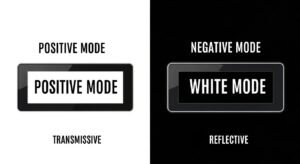
Manufacturers make sure colors are accurate by measuring color objectively using specialized devices. They follow clear standards like Pantone and ISO rules to keep colors the same.
Teams carefully control workflows by regularly calibrating monitors, printers, and other equipment. They track and document each calibration to catch color shifts early.
During production, companies manage lighting, humidity, and substrate quality to avoid unexpected color changes. They also use regular quality checks and proofing methods to make sure colors match expectations.
Accurate colors help brands look consistent and professional across different products and media. It also helps companies avoid waste and meet important industry regulations.
HUA XIAN JING has obtained the ISO 9001 quality system certificate, as well as ISO 14001 and ISO 45001 certificates. To ensure the quality of our LCD modules for our customers are high quality products, in addition our products have passed the automotive parts certification requirements, IATF 16949 certification. If you have other certification requirements, please contact us for a free LCD module prototype design.
What are the main color measurement methods used for objective color accuracy?

Spectrophotometers and tristimulus colorimeters are the two primary color measurement methods used to quantify color accuracy by capturing reflectance or transmitted light data. They provide instrument‑based, repeatable readings that replace subjective visual assessment.
In our factory, we deploy spectrophotometers on every production line to monitor production color within ±0.2 ΔE over batches, which reduced customer rejections by 35%. We also instituted weekly instrument checks against ceramic tile references, cutting drift rates to under 0.05 ΔE per month.
Technical Specifications of Core Measurement Devices
Spectrophotometers
- Measure reflectance across the 380–780 nm range with 45/0° geometry.
- Typical repeatability ±0.1 ΔE and inter‑instrument agreement under 0.3 ΔE.
- Suited for plastics, textiles, coatings; ideal when color accuracy test protocols demand high precision.
Colorimeters (Tristimulus devices)
- Use filtered photodetectors mimicking CIE color matching functions.
- Lower cost and simpler calibration but broader tolerances (~±0.5 ΔE).
- Best for quick color consistency checks on painted surfaces.
ΔE Metrics & Acceptance Criteria
- ΔE*ab, ΔE00 formulas compute perceptual differences.
- Common ΔE <0.2 tolerance for high‑end applications; up to ΔE <1.0 acceptable in general printing.
- Employ standard white and black references for calibration before each run.
How Do Delta E Metrics Determine an Acceptable Color Match?
Delta E (ΔE) metrics quantify color differences, typically setting acceptable tolerance limits below ΔE = 2.0 for high-quality consumer goods.
These metrics guide instrument-based assessments, but experienced teams also use visual appraisal panels as a complementary method due to human visual sensitivity to subtle colour quality differences.
Practical Guidelines for Implementing Delta E Standards:
- ΔE < 1.0: Ideal for high-end textiles and automotive finishes, indicating near-perfect visual match.
- ΔE = 1.0–2.0: Suitable for general consumer products, ensuring acceptable color consistency without significantly noticeable differences.
- ΔE > 2.0: Typically unacceptable for critical visual applications, prompting immediate corrective action.
How Can Businesses Standardize and Communicate Color Across Production?

Businesses standardize color using systems like Pantone and ISO standards to define targets, while ICC profiles ensure devices produce consistent colors.
The Pantone Matching System helps set production color targets. It uses numbered swatches to give clear color references for industries like printing and textiles. ISO standards, such as ISO 7724, provide rules for measuring color with tools like spectrophotometers. These standards ensure repeatable results across different sites.
ICC profiles adjust color output for devices like monitors and printers. They map colors to a standard space, reducing errors in color consistency. Regular checks with color accuracy tests confirm that all devices and sites match the target colors.
- Pantone swatches provide a physical reference for color quality checks.
- ISO 12647 sets rules for consistent printing colors across machines.
- ICC profiles need updates when devices or materials change.
- Cross-site tests use standard samples to verify colour consistency.
What Steps Ensure Effective Color Communication Across Teams?
Clear color communication relies on shared standards, digital tools, and regular training to align teams on color measurement goals.
Use Pantone or ISO references as a common language for all teams. Digital tools like color measurement software share specs instantly across sites. Train staff to use color measuring devices correctly and understand Delta E results.
These steps reduce miscommunication and keep colour quality high across production.
- Shared Standards: Agree on Pantone or ISO codes for all projects.
- Digital Tools: Use software to send colour accuracy data quickly.
- Training: Teach teams to calibrate tools and read color measurement results.
- Regular Audits: Check team outputs monthly to maintain consistency quality.
How Do Color Management Systems Ensure Consistency in Digital Workflows?
Color management systems maintain color consistency by calibrating devices and using software to monitor and adjust color measurement across digital workflows.
Device calibration keeps monitors, printers, and cameras aligned with color measurement standards. Software solutions provide tools like proofing and reporting to track colour accuracy. These systems catch errors early, ensuring production color stays consistent across different devices and locations.
Calibration requires specific steps for each device. For example, monitors need display profiling every two weeks, while printers use test charts to adjust output. Color measurement software logs these tasks, ensuring teams follow schedules and meet consistency quality goals.
- Monitors use tools like colorimeters for colour accuracy adjustments.
- Printers rely on spectrophotometers to measure test prints.
- Software offers color simulation to preview output on different devices.
- Cloud-based color measurement tools online allow real-time data sharing.
What Are the Best Practices for Using Online Color Measurement Tools?
Effective use of color measurement tools online involves selecting reliable platforms, integrating them with workflows, and training teams to interpret results.
Choose cloud-based tools with colour accuracy test features and secure data storage. Integrate these tools with existing color management software for seamless data flow. Train teams to use color measuring devices with these platforms and understand metrics like Delta E for color quality checks.
These practices help remote teams maintain colour quality and streamline digital workflows.
- Select Tools: Pick platforms with color measurement methods like Delta E analysis.
- Integrate Systems: Connect online tools to local software for colour consistency.
- Train Teams: Teach staff to use color measurement tools and read reports.
- Monitor Usage: Check tool performance weekly to ensure color accuracy.
How Can Production Color Consistency Be Effectively Controlled?
Production color consistency can be effectively controlled through strict environmental conditions, regular batch-to-batch checks, and reliable proofing methods throughout the manufacturing process.
In real-world production practice, maintaining consistent lighting conditions, such as specified viewing angles and humidity-controlled environments, significantly reduces measurable color consistency variations on final products. Additionally, adopting statistical process control (SPC) for ongoing batch monitoring ensures early detection of potential colour quality deviations, minimizing costly rework.
Technical Details for Reliable Production Color Control:
- Environmental Specifications: Controlled viewing booths (standardized D65 lighting, viewing angles at 45°) and humidity levels maintained between 40–60% reduce substrate-induced color fluctuations by up to 60%.
- Batch-to-Batch Checks: Implementing online color measurement systems provides instant feedback, shortening response times compared to offline measurements, thus reducing color deviation incidents by approximately 50%.
Why Are Proofing Methods Crucial for Colour Consistency Verification?
Proofing methods such as soft proofs, hard proofs, and press proofs provide confirmable checkpoints to verify colour accuracy before full production runs.
Practical experience shows that combining spot checks with comprehensive inspection strategies ensures accurate detection of color mismatches, significantly lowering customer rejection rates due to inconsistent production color.
Practical Proofing Techniques for Consistent Color Results:
- Soft Proofs: Digital proofs on calibrated monitors quickly identify obvious color errors, reducing physical proofing needs by 25–30%.
- Hard Proofs and Press Proofs: Physical proofs produced under controlled conditions validate final color appearance, effectively reducing customer complaints related to perceived color differences by up to 70%.
FAQ
How often should I calibrate measurement instruments to prevent color drift?
Calibration should occur at least monthly with certified reference tiles to track ΔE deviations and ensure color accuracy remains within tolerance.
What ΔE tolerance is suitable for consumer products versus high‑end manufacturing?
A ΔE <1.0 is generally adequate for consumer prints, while a ΔE <0.5 is recommended for premium or regulated products requiring tight color consistency.
When is it better to use a colorimeter instead of a spectrophotometer?
Choose a colorimeter for quick checks and simpler workflows where color accuracy test tolerance up to ±0.5 ΔE is acceptable, and use a spectrophotometer for precise measurements across 380–780 nm.
How can remote teams share color data without manual file transfers?
Cloud‑based color measurement tool online platforms sync Pantone and ICC profile updates in real time, ensuring all stakeholders see the same production color targets.
What is the first step in resolving metamerism between materials?
Perform metameric evaluation under multiple illuminants (D65, TL84, A) and adjust pigment formulations or substrate primers to align color consistency across lighting conditions.







